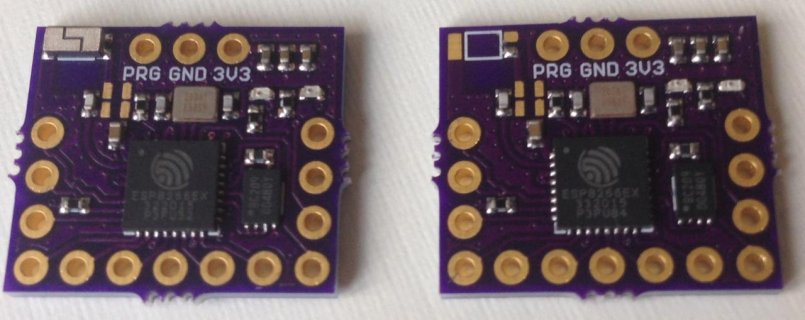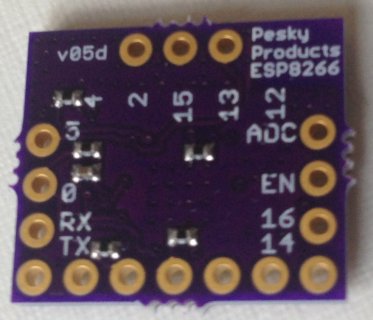onehorse
Well-known member
I redesigned the ESP8266 add-on I've been playing with to work with the Teensy 3.2.
I was able to dispense with the on-board 3V3 LDO and use the Teensy 3.2's 500 mA regulator instead. I also reduced the boards size and designed it to mount on the more-natural non-USB end of the Teensy. I broke out the Teensy program pin connected to ESP8266 pin 5. The user needs to choose whether to connect pin 5 or the program pin to the Teensy. The (Paul's) idea of breaking out the program pin is to allow OTA programming of the Teensy from the ESP8266 via Serial3 transfer to the Teensy. I haven't demonstrated this yet but with this board all of the pieces are in place to do so.
Here is what the board looks like:

I have been experimenting with different antennas. I've found just adding a solder point and attaching a few-cm-long wire gives the best reception. This is also the cheapest solution and allows the smallest form factor. I'll make one more revision with this antenna type and put these boards up for sale at Tindie.

I hope onoe of the bright bulbs on this forum can demonstrate the OTA functionality with this board.
I was able to dispense with the on-board 3V3 LDO and use the Teensy 3.2's 500 mA regulator instead. I also reduced the boards size and designed it to mount on the more-natural non-USB end of the Teensy. I broke out the Teensy program pin connected to ESP8266 pin 5. The user needs to choose whether to connect pin 5 or the program pin to the Teensy. The (Paul's) idea of breaking out the program pin is to allow OTA programming of the Teensy from the ESP8266 via Serial3 transfer to the Teensy. I haven't demonstrated this yet but with this board all of the pieces are in place to do so.
Here is what the board looks like:

I have been experimenting with different antennas. I've found just adding a solder point and attaching a few-cm-long wire gives the best reception. This is also the cheapest solution and allows the smallest form factor. I'll make one more revision with this antenna type and put these boards up for sale at Tindie.

I hope onoe of the bright bulbs on this forum can demonstrate the OTA functionality with this board.
Last edited:

